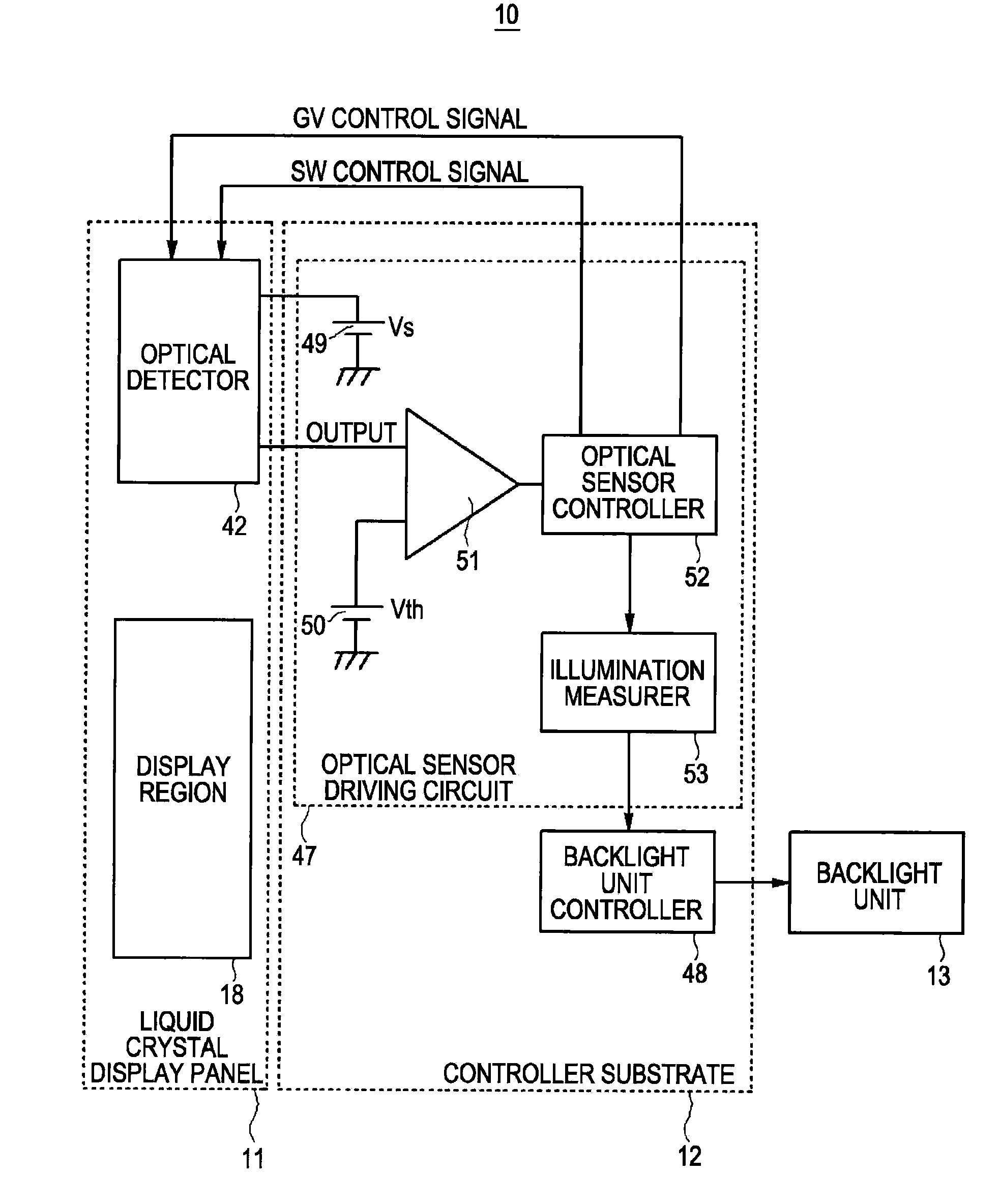Display device
a display device and display technology, applied in the direction of electric variable regulation, process and machine control, instruments, etc., can solve the problems of large power consumption, difficult to see the image displayed thereon in a dark place, small power consumption, etc., and achieve the effect of preventing detection errors
- Summary
- Abstract
- Description
- Claims
- Application Information
AI Technical Summary
Benefits of technology
Problems solved by technology
Method used
Image
Examples
first embodiment
[0060]Next, an operation of the optical sensor driving circuit 47 of the liquid crystal display device 10 according to the first embodiment will be described with reference to FIGS. 1, 7, and 8. When the optical sensor driving circuit 47 starts to be operated in a power-on state, the optical sensor controller 52 outputs the GV control signal so that a voltage GV of the gate electrode GL of the optical sensor TFTL formed by the TFT is in an off state (inverse bias state) (step S11). Accordingly, a current flowing between the source electrode SL and the drain electrode DL of the optical sensor TFTL formed by the TFT is only a leakage current generated by the light. Then, the optical sensor controller 52 initializes an internal counter (not shown) (step S12). The counter has a function of measuring time by counting the number of pulses in accordance with a clock pulse signal of a predetermined frequency. Then, the optical sensor controller 52 turns on the switch SW (step S13), and outp...
second embodiment
[0069]Next, an operation of the optical sensor controller 52 of the liquid crystal display device 10 according to the second embodiment will be described with reference to FIGS. 1, 9, and 11. In addition, in the optical sensor controller 52 according to the second embodiment, the same reference numerals will be given to the same components as those of the optical sensor controller 52 according to the first embodiment, and the detailed description thereof will be omitted.
[0070]Step S11 to step S21 in the flowchart of the optical sensor controller 52 according to the second embodiment shown in FIG. 9 are the same as step S11 to step S21 in the flowchart of the optical sensor controller 52 according to the first embodiment shown in FIG. 7. When step S19, step S20, and step S21 end, the optical sensor controller 52 according to the second embodiment carries out step S22, the period during which the gate electrode GL of the optical sensor TFTL formed by the TFT is turned on is calculated...
PUM
 Login to View More
Login to View More Abstract
Description
Claims
Application Information
 Login to View More
Login to View More - R&D
- Intellectual Property
- Life Sciences
- Materials
- Tech Scout
- Unparalleled Data Quality
- Higher Quality Content
- 60% Fewer Hallucinations
Browse by: Latest US Patents, China's latest patents, Technical Efficacy Thesaurus, Application Domain, Technology Topic, Popular Technical Reports.
© 2025 PatSnap. All rights reserved.Legal|Privacy policy|Modern Slavery Act Transparency Statement|Sitemap|About US| Contact US: help@patsnap.com



